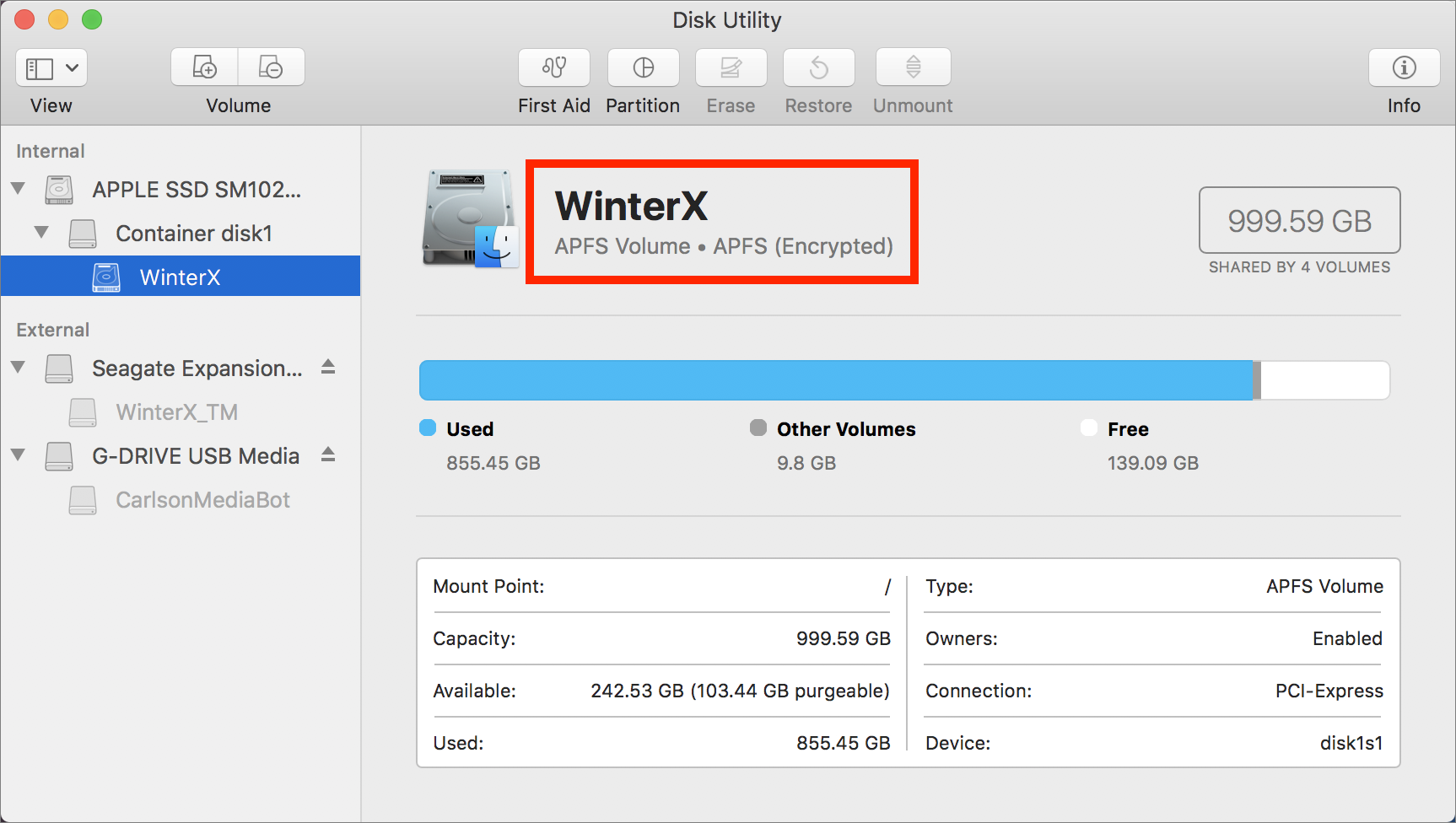

There are several different types each with different options and volume formats (APFS, HFS+, etc). When a disk image file is opened on a Mac, a disk icon appears just as if a removable disk was inserted. Very old versions of Windows (95, 98, Me) do not natively support NTFS.Ī Mac disk image is a file based representation of a file system. It does not have as many limitations as the FAT systems and also includes much needed security and reliability features. FAT32 was created to alleviate some of these problems, but it still has limitations like a maximum file size of 4GB. They had the same sort of problems HFS had due to growing disk sizes.

FAT12 and FAT16 originated in the DOS days. There are three variations of the FAT file system: FAT12, FAT16 and FAT32. Windows uses two primary types of file systems FAT (File Allocation Table) and NTFS (New Technology File System).

Large volumes with small files waste a lot of space.One major feature is to allow case sensitive file names.Purpose is to allow extended features that will not be compatible with HFS+.Copy-on-write instead of journaling for crash recovery.Volume size changes without repartitioning. Space Sharing allows multiple volumes in a single container to share space.Volume snapshots to revert changes easily.
Apfs mac file sharing full#
Instead of a full copy, only changes are saved to reduce storage space. More efficient use of very large drives.TransMac can open APFS volumes from Windows (read-only) starting with version 12.1. APFS is an overdue redesign that supports modern file system architecture including larger drives and optimizations for solid state disks (SSD). The file names "fname", "Fname" and "FNAME" would all refer to the same file in HFS/HFS+, but they would refer to different files in HFSX if the case sensitive feature was turned on. One such feature is case sensitive file/folder names. HFSX is basically the same as HFS+, but it allows for new file system features to be specified.
Apfs mac file sharing mac os#
Mac OS 10.3 brought a new iteration of HFS+ called HFSX. HFS was required on older systems (before OS8.1). The major differences between the two are outlined below. Mac OS Extended (or HFS+ as it was originally called) is similar to HFS but some of its internal structures were changed to accommodate the changing needs of modern personal computing. Limitations appeared in this format when disk drives grew very large in size. HFS Standard came about early on in the life of the Macintosh line when disks had relatively small capacities. Older versions of Mac file systems are Mac OS Standard (or HFS Standard) and Mac OS Extended (or HFS+). The newest version of Mac file system (or volume format) is Apple File System (APFS) which first appeared in macOS High Sierra (version 10.13).
Apfs mac file sharing Pc#
Mac and PC computers use different primary file systems which is why a program like TransMac is necessary. Mac and Windows PC Files Mac and Windows PC FilesĪ file system organizes large numbers of files on some sort of data storage medium (most commonly a disk drive, CD-ROM or DVD).


 0 kommentar(er)
0 kommentar(er)
